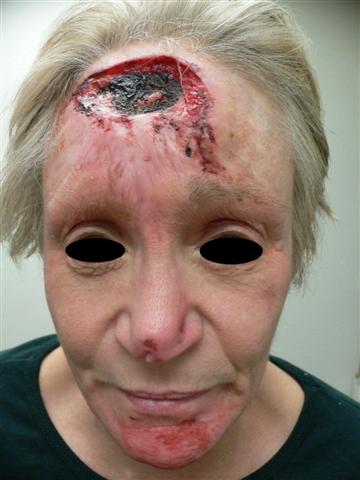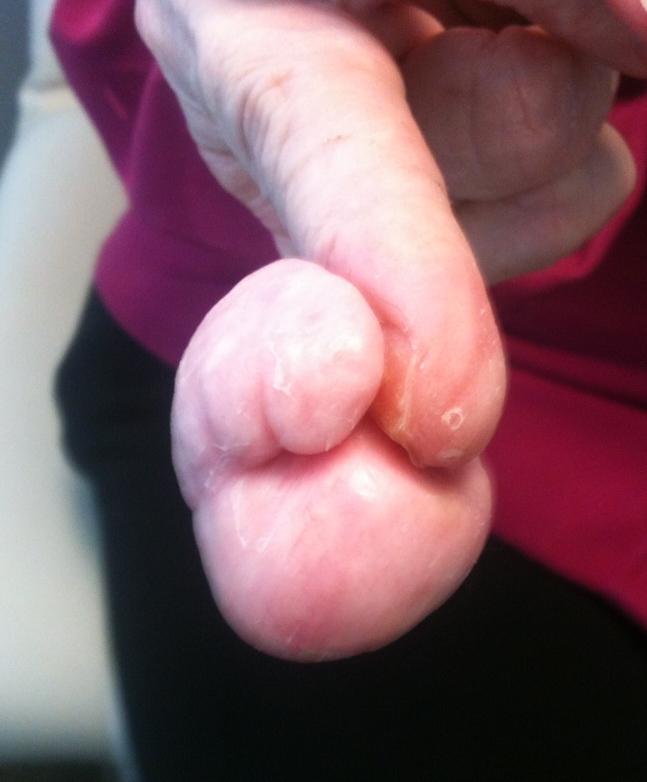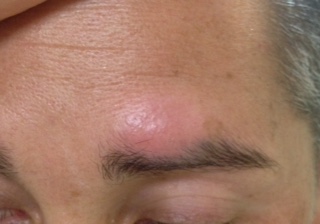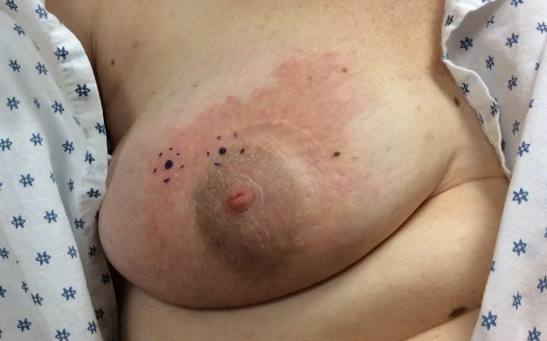CORRECT DIAGNOSIS:
Delusions of Parasitosis
DISCUSSION:
Patients with delusions of parasitosis have a fixed, yet false belief of being infected with parasites. They typically appear in the dermatologist’s office anxious and overwhelmed with a history of visits to multiple physicians. It is important for the physician faced with this patient to listen and be compassionate, yet not to reinforce their delusional ideology.
This disease, known as a monosymptomatic hypochondrial psychosis, has a female to male predominance of 2:1 and the mean age of symptom onset appears in the sixth decade of life. Patients often present with the “matchbox sign”, in which they have gathered specimens of parasites they have collected and want to have examined. Patients may resort to self-mutilation to rid themselves of these parasites, which may result in mild excoriations to large ulcers.
The appearance of the ulcers mimics many other disease entities such as granulomatous disease, neoplasms, vasculitis, infection, and factitial dermatitis. A thorough skin exam must be performed to rule out any organic causes for the patient’s symptoms such as nutritional disorders, neurologic disorders, substance abuse, endocrine disorders, malignancy, and infectious disease. Skin scraping and skin biopsy can be performed to confirm a certain diagnosis when indicated. To break the cycle of tactile sensation leading to destruction, the ultimate treatment is to prescribe antipsychotic medication. Most importantly, patients must be educated as to the cause of their condition and the importance of controlling their behavior.
TREATMENT:
Treatment for delusions of parasitosis is multi-faceted and is tailored to the patient and how receptive they are in their understanding of their condition. It is important to address the wounds and prescribe a topical antibiotic or ulcer treatment under occlusion (in our case, Biafine Topical Emulsion BID) in order to prevent further infection. Further, systemic medications may be considered for symptom relief. However, since the condition has an underlying psychiatric component, the recommended therapy is treatment with anti-psychotics. Traditionally pimozide, a powerful antipruritic acting on opioid pathways, was used but has fallen out of favor due to the extrapyramidal symptoms. Currently, it is recommended to use risperidone or olanzapine, which are tolerated better by patients.
REFERENCES:
Zomer, S. F., De Wit, R. F., et al. (1998). Delusions of parasitosis: A psychiatric disorder to be treated by dermatologists? An analysis of 33 patients. British Journal of Dermatology, 138, 1030-1032. PMID: 9681505
Sandoz, A., LoPiccolo, M., et al. (2008). A clinical paradigm of delusion of parasitosis. Journal of the American Academy of Dermatology, 59, 679-704. PMID: 18655917
Koo, J. Y., & Pham, C. T. (1992). Psychodermatology: Practical guidelines on pharmacotherapy. Archives of Dermatology, 128, 381-388. PMID: 1530677
Sadeghi, P., Papay, F. A., et al. (2004). Trigeminal trophic syndrome: Report of four cases and review of the literature. Dermatologic Surgery, 30, 807-812. PMID: 15104976
Sanches, N. B., Martin, M. T., et al. (2008). Ala nasal reconstruction in trigeminal trophic syndrome. Dermatologic Surgery, 34, 1397-1403. PMID: 18721148
Elmer, K. B., George, R. M., et al. (2000). Therapeutic update: Use of risperidone for the treatment of monosymptomatic hypochondriacal psychosis. Journal of the American Academy of Dermatology, 43, 683-686. PMID: 11020138
Meehan, W. J., Badreshia, S., et al. (2006). Successful treatment of delusions of parasitosis with olanzapine. Archives of Dermatology, 142, 352-355. PMID: 16520423




